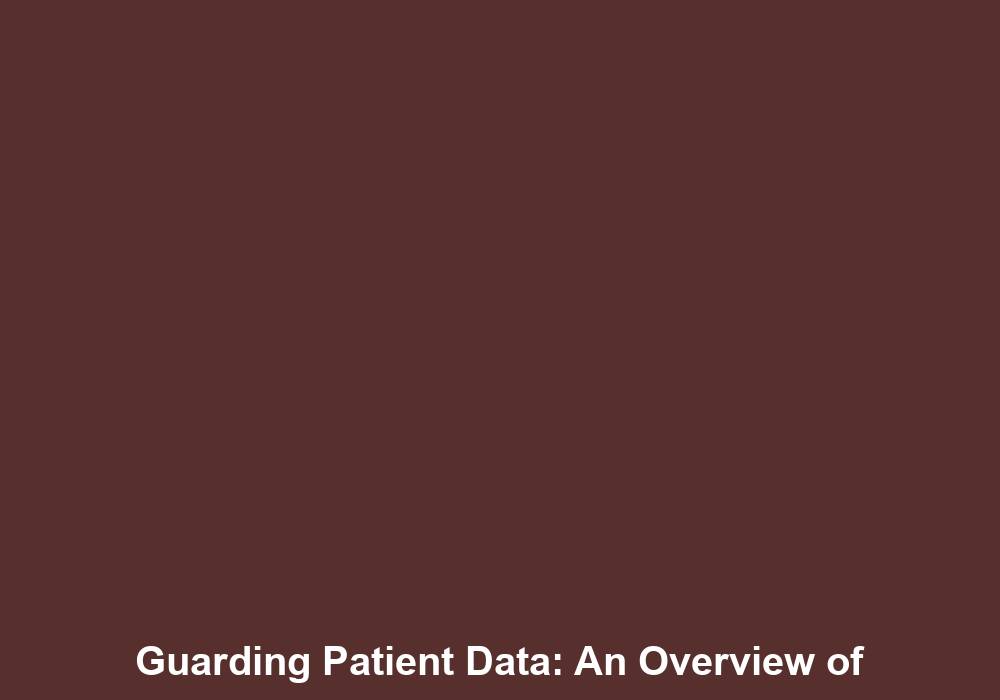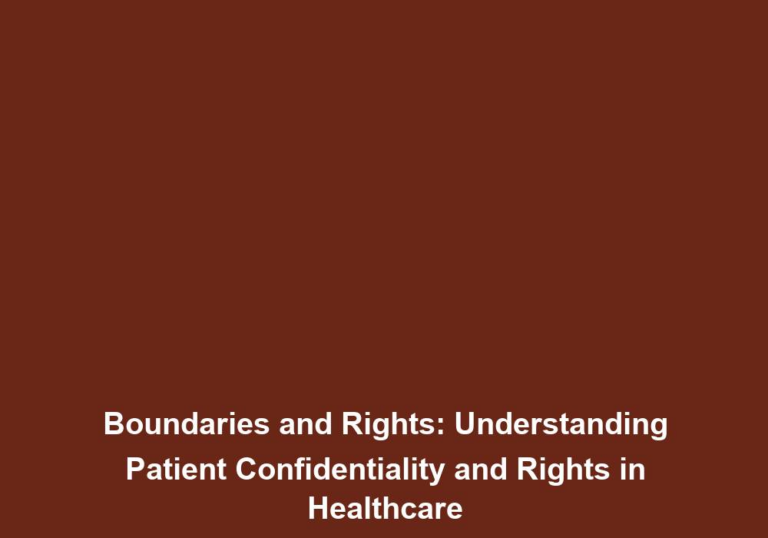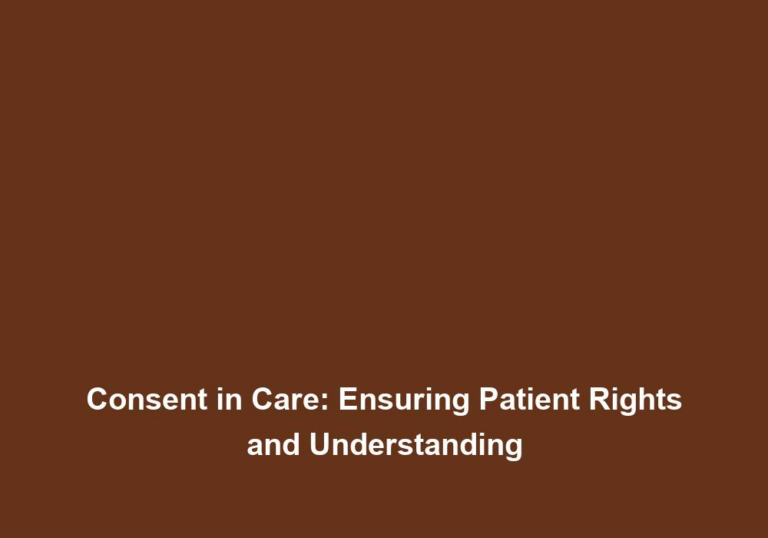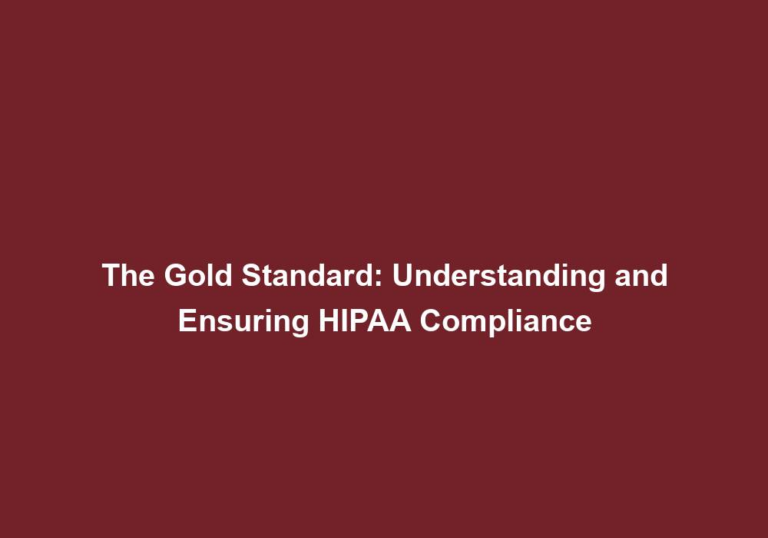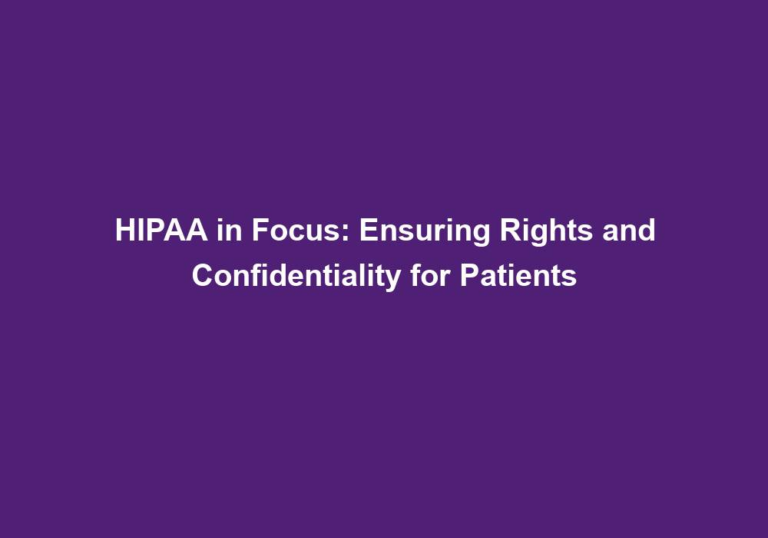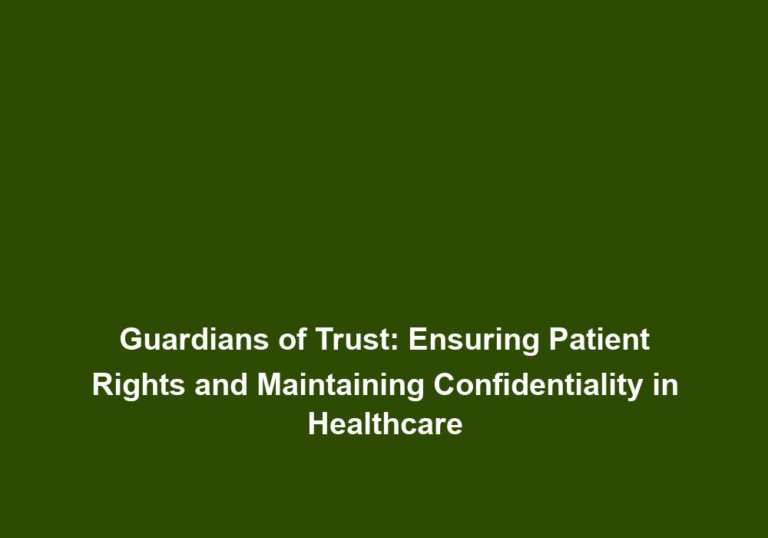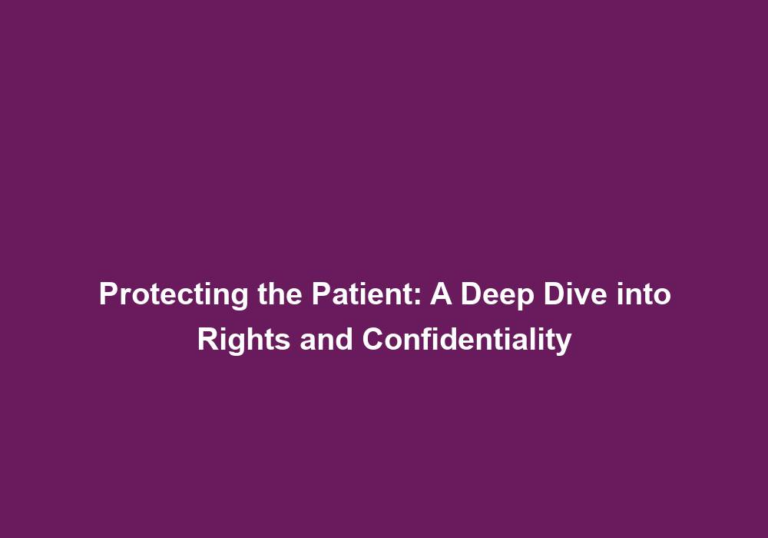Guarding Patient Data: An Overview of HIPAA Compliance
In today’s digitally-driven world, protecting patient data has become a top priority for healthcare organizations. The Health Insurance Portability and Accountability Act (HIPAA) was established to ensure the confidentiality, integrity, and availability of patient information. Compliance with HIPAA regulations is a must for healthcare providers, as failing to do so can lead to severe penalties and reputational damage. In this article, we will provide a comprehensive overview of HIPAA compliance, its significance, and the measures healthcare organizations must take to safeguard patient data.
The Importance of HIPAA Compliance
HIPAA compliance plays a crucial role in maintaining the privacy and security of patient information. By adhering to HIPAA regulations, healthcare providers demonstrate their commitment to protecting sensitive data and maintaining patient trust. Additionally, compliance helps prevent data breaches, identity theft, and unauthorized access to medical records. It also ensures that patients have control over their health information and enables seamless information exchange between healthcare entities.
It is important to note that HIPAA compliance is not just about avoiding penalties. It is about creating a culture of security and privacy within healthcare organizations. When patients know their data is protected, they are more likely to engage with healthcare providers and share important information. This, in turn, leads to better healthcare outcomes and improved patient satisfaction.
Understanding HIPAA Regulations
HIPAA regulations are divided into two main components: the Privacy Rule and the Security Rule. Let’s explore each in detail:
Privacy Rule
The HIPAA Privacy Rule establishes national standards for protecting individuals’ medical records and other personal health information. It applies to all healthcare providers, health plans, and healthcare clearinghouses, collectively referred to as covered entities. The Privacy Rule grants patients rights over their health information and sets limits on its disclosure. Healthcare organizations must obtain patient consent before using or disclosing their information, except in specific situations defined by the rule.
To comply with the Privacy Rule, healthcare organizations must develop policies and procedures that govern the use and disclosure of patient information. These policies should outline how patient consent is obtained, how information is shared with other healthcare entities, and how patients’ rights are protected. Additionally, organizations must implement safeguards to prevent unauthorized access to patient data and train employees on their responsibilities under the Privacy Rule.
Security Rule
The HIPAA Security Rule complements the Privacy Rule by setting standards for the electronic exchange, security, and confidentiality of protected health information (PHI). The Security Rule applies to covered entities that transmit or store PHI electronically. It requires organizations to implement administrative, physical, and technical safeguards to protect patient data from unauthorized access, alteration, or destruction.
To comply with the Security Rule, healthcare organizations must conduct regular risk assessments to identify vulnerabilities in their systems and processes. Based on these assessments, they must develop and implement policies and procedures that address the identified risks. This includes implementing access controls to limit who can access patient data, using encryption to protect data in transit and at rest, and implementing firewalls and other security measures to protect against unauthorized access.
HIPAA Compliance Requirements
To achieve HIPAA compliance, healthcare organizations must undertake several measures to ensure the security and privacy of patient data. Here are the key requirements:
Conducting Risk Assessments
Healthcare entities must regularly conduct comprehensive risk assessments to identify potential vulnerabilities and threats to patient data. This assessment assists in prioritizing security measures, implementing appropriate safeguards, and developing a risk management plan.
During a risk assessment, organizations should identify and assess potential risks to the confidentiality, integrity, and availability of patient data. This includes evaluating the physical security of facilities, assessing the security of electronic systems, and identifying potential threats such as malware or unauthorized access. By conducting regular risk assessments, healthcare organizations can proactively identify and address security vulnerabilities before they lead to a data breach.
Developing Policies and Procedures
HIPAA compliance necessitates the development of comprehensive policies and procedures tailored to the organization’s specific needs. These policies and procedures should cover areas such as the use and disclosure of PHI, patient consent, breach notification, employee training, and workstation security.
Policies and procedures should clearly outline how patient data is handled within the organization. This includes defining who has access to patient information, when and how patient consent is obtained, and how breaches or incidents are reported and addressed. It is essential to regularly review and update these policies and procedures to ensure they remain in line with current regulations and best practices.
Implementing Physical Safeguards
Physical safeguards involve securing the physical premises and devices that house patient data. Examples include restricted access to areas containing PHI, secure storage of paper records, and proper disposal of sensitive information.
To implement physical safeguards, healthcare organizations should establish access controls to limit who can enter areas where patient data is stored. This may include using key cards or biometric authentication to restrict access. Additionally, organizations should ensure that paper records are stored in locked cabinets or rooms and that they are securely destroyed when no longer needed. By implementing physical safeguards, healthcare organizations can prevent unauthorized individuals from accessing patient data.
Establishing Technical Safeguards
Technical safeguards involve implementing measures to protect electronic PHI. This includes using strong passwords and encryption, regularly updating software, conducting regular vulnerability scans, and ensuring secure transmission and storage of data.
To comply with technical safeguards, healthcare organizations should implement strong password policies to prevent unauthorized access to electronic systems. This may include requiring employees to use complex passwords and regularly change them. Additionally, organizations should encrypt patient data to protect it during transmission and storage. Regular vulnerability scans should be conducted to identify and address any weaknesses in the organization’s systems. By implementing these technical safeguards, healthcare organizations can significantly reduce the risk of data breaches and unauthorized access.
Training Staff
Healthcare organizations must provide comprehensive training to employees regarding HIPAA regulations, the importance of patient privacy, and the organization’s policies and procedures. This training should be ongoing and cover topics such as identifying and reporting security incidents, handling patient requests, and maintaining the confidentiality of PHI.
Training is a critical component of HIPAA compliance, as employees are often the weakest link in an organization’s security defenses. Healthcare organizations should provide regular training sessions to educate employees on their responsibilities under HIPAA and reinforce the importance of patient privacy and data security. Training should cover topics such as identifying and reporting security incidents, handling patient requests, and ensuring the proper handling and disposal of patient data. By investing in comprehensive training, healthcare organizations can empower their employees to be proactive in protecting patient data.
Conducting Audits and Monitoring
Regular audits and monitoring of systems, processes, and employee practices are essential to ensure ongoing compliance with HIPAA regulations. These audits help identify any gaps or vulnerabilities and enable organizations to take corrective actions promptly.
Audits should be conducted regularly to assess the effectiveness of the organization’s security measures and identify any areas of non-compliance. This includes reviewing access logs, conducting penetration testing, and assessing employee adherence to policies and procedures. By monitoring systems and practices, healthcare organizations can quickly identify and address any security issues before they lead to a data breach or compliance violation.
Penalties for Non-Compliance
Non-compliance with HIPAA regulations can result in severe penalties. The Department of Health and Human Services’ Office for Civil Rights (OCR) is responsible for enforcing HIPAA and has the authority to investigate complaints and conduct compliance reviews. Penalties can range from fines to criminal charges, depending on the severity of the violation. Organizations found guilty of willful neglect can face fines up to $1.5 million per violation.
It is important for healthcare organizations to understand the potential consequences of non-compliance and take the necessary steps to ensure HIPAA compliance. By investing in robust security measures, regular training, and ongoing monitoring, organizations can significantly reduce the risk of non-compliance and protect patient data.
Conclusion
In conclusion, HIPAA compliance is of utmost importance for healthcare organizations in safeguarding patient data. Adhering to HIPAA regulations ensures the privacy, security, and integrity of sensitive health information, maintaining patient trust and preventing data breaches. By conducting risk assessments, developing policies and procedures, implementing physical and technical safeguards, training staff, and conducting regular audits, healthcare providers can establish a robust HIPAA compliance program. Failure to comply with HIPAA can lead to significant legal and financial consequences. Therefore, healthcare organizations must prioritize HIPAA compliance to protect patient data effectively.

